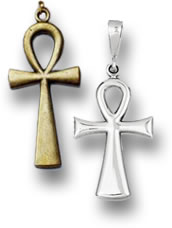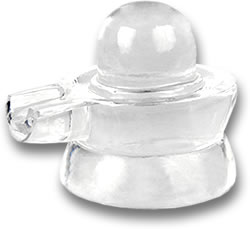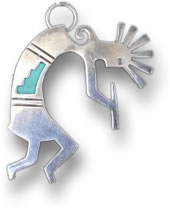|
Revisados pela Andreas Zabczyk
Gems, Jewelry and Charms for Fertility Silver and Gold Ankh Pendants
Cultures all over the world have fertility lore. This can be in the form of superstitions, rituals, beliefs and objects or symbols that are connected with fertility. In ancient Egypt, the Ankh was a symbol of life, and perhaps, the giving of life. The Ankh appears like a Christian cross with a loop at the top. It is an ancient Egyptian hieroglyph but what image it represents is not entirely clear. Some say that it looks like a bow or knot and others say it could represent the rising sun or sex organs (and thus fertility). The Ankh sign can be seen in ancient Egyptian images of gods. It is not clear as to whether the Ankh symbol was a fertility charm in ancient Egypt, but it was related to the afterlife, immortality and protective power. A gold covered mirror case from the tomb of King Tutankhamun was in the shape of an Ankh. It was beautifully engraved with hieroglyphs and inlaid with colored gemstones. The Ankh symbol was adopted by the Coptic Orthodox Church and is known in Latin as crux ansata (cross with a handle). As is true in many cultures, in ancient Egypt, the phallus was seen as a symbol of fertility. The god of the afterlife, Osiris, was associated with regeneration due to a myth that his wife, Isis, gathered his scattered body parts to resurrect him, except for his penis, which had been unfortunately eaten by a fish, so Osiris made a replacement phallus. The Egyptian god of fertility, Min, was often depicted with an erect penis. Additionally, turquoise and malachite were associated with the ancient Egyptian goddess of women and mothers, Hathor.  White Quartz Spatika Lingam
In Hinduism, the supreme god, Shiva is worshipped, and a sign of Shiva is the rounded column known as a lingam. In some temples, "Spatika Lingams" are revered. These are composed of colorless quartz. Offerings such as milk, water or sacred ash are presented to the stones, which are believed to hold divine power that can eliminate negative energy. While it is generally accepted that the lingam is a sign of the deity, many interpret the lingam as a phallus. Indeed, there are lingams which are detailed, lifelike and accompanied by a Yoni; a depiction of the female parts. The union of the two is said to represent the generative power of nature and certain Indus Valley tribes worship the phallus as a fertility symbol. However, Lingam-Yoni worship is not necessarily part of Hinduism. Some of the traditional Hindu jewelry items worn by married ladies are thought to promote a healthy reproductive system. Toe rings are worn on the second toes of both feet because a nerve in this toe is believed to connect the uterus with the heart and stimulate the female reproductive system. When it comes to jyotish jewelry (traditional Vedic beliefs), some men wear toe rings on the big toe in order to promote virility. In other parts of Asia, the phallus is worshipped or used as a charm. For example, in Indonesia and Thailand, charms are worn and respected. These are made from various materials, such as wood, stone, bone, bronze and silver. In Japan, there is a famous fertility shrine; the Mara Kannon Shrine, which has many penis statues. Shrines in Japan sell amulets known as omamori, which often contain a small prayer and Kanayama Shrine, which has an annual "steel phallus" festival offers sexual health omamori once a year. Another Japanese fertility festival takes place in Komaki, where a six-and-a-half-foot long wooden phallus is paraded.  Silver Kokopelli Pendant with Turquoise Inlay
The ancient Aztecs worshipped the earth mother goddess, Tlazolteotl, also known as the "goddess of filth" because she represented sinful sex. A well-known wernerite or aplite sculpture of a female giving birth is thought to be a depiction of the goddess. Further north, Native Americans from the Southwest have a flute playing hunchbacked fertility figure called kokopelli. His image can be seen in ancient cave art. Kokopelli charms are available in silver, gold and many other materials. They are usually used as pendants and are sometimes embellished with gemstones. Phallic charms were used by the ancient Romans. These were known as fascinum and were worn to ward off the evil eye. They were often made from bronze and sometimes even gold. Gold rings with a phallus on were also worn by sons of wealthy Roman families. In Christianity and Judaism, red gemstones are associated with fertility. This goes back to the High Priest's breastplate and his assisting Rachel to conceive. Such red gems include ruby and carnelian. Further symbols of fertility are the snake and horns, especially the horn of life or horn of plenty (also known as corno, cornucopia or cornicello), which is typically rendered in coral, silver or gold. The horn of life is thought to bring luck, protection and fertility. With regard to gemstones that are associated with fertility, the most popular are rose quartz and moonstone. Rose quartz is said to calm its wearer and to encourage love and healing. Moonstone has been long associated with ladies and lovers. In Arab countries, some ladies used to sew moonstone into undergarments to encourage fertility. Additionally, jade is thought to promote good health and protect the wearer. Aventurine is another gemstone that is believed to bring calmness and feelings of well-being. These and other gems are generally worn as "fertility bracelets". While fertility charms and gems are not proven to help women conceive, it is interesting to learn about the lore surrounding such ideas. Some women find fertility jewelry comforting when they are faced with fertility challenges, and others see these decorations as something that may not necessarily help, but will certainly not hinder a mother-to-be. Esta página em outros idiomas
|
| STAY IN TOUCH | NEWSLETTER |
| *Você está se inscrevendo para receber e-mail promocional da GemSelect. |
direito autoral © 2005-2024 GemSelect.com todos os direitos reservados.
A reprodução (texto ou gráficos) sem o consentimento expresso por escrito da GemSelect.com (SETT Company Ltd.) é estritamente proibida.
2678